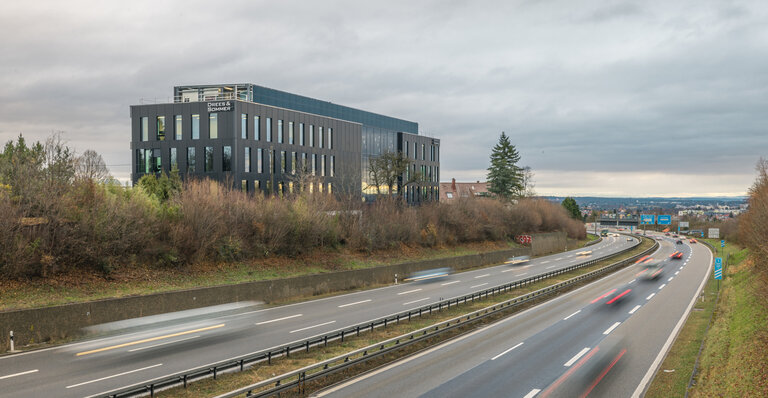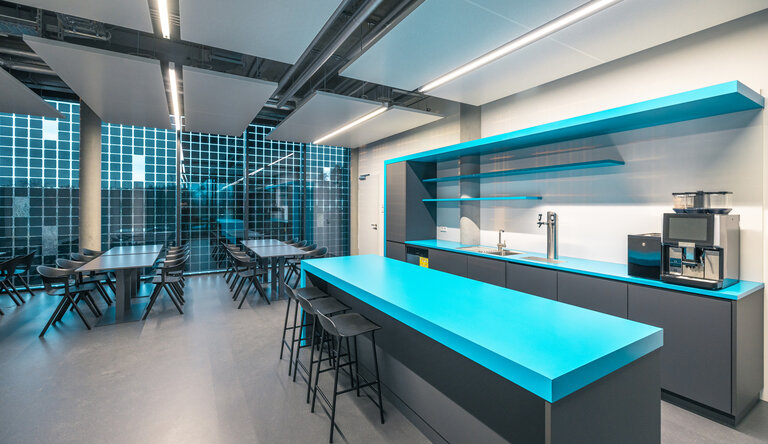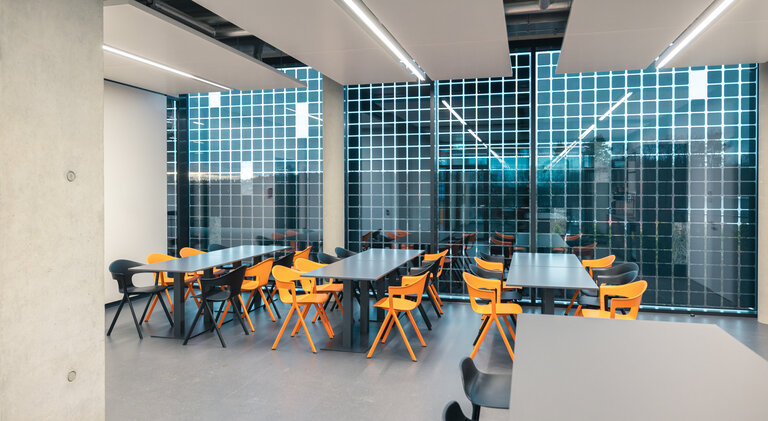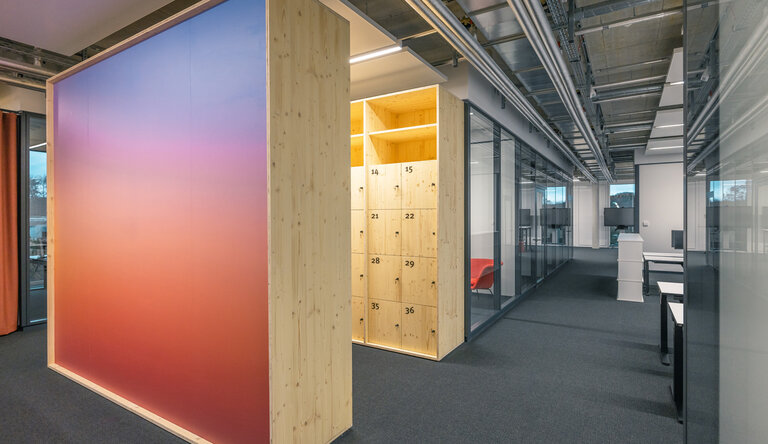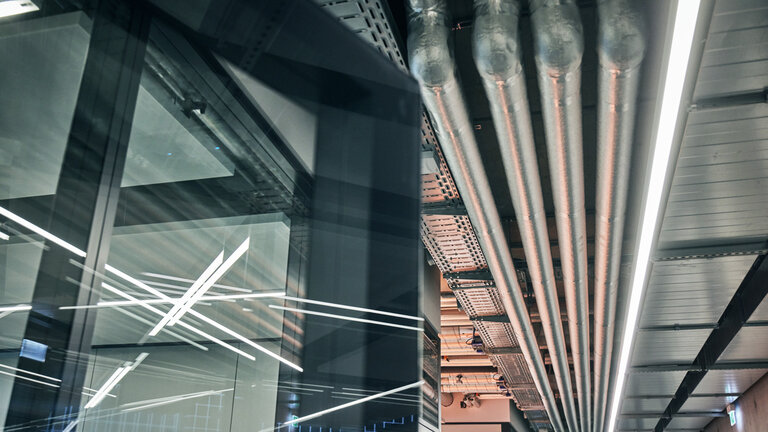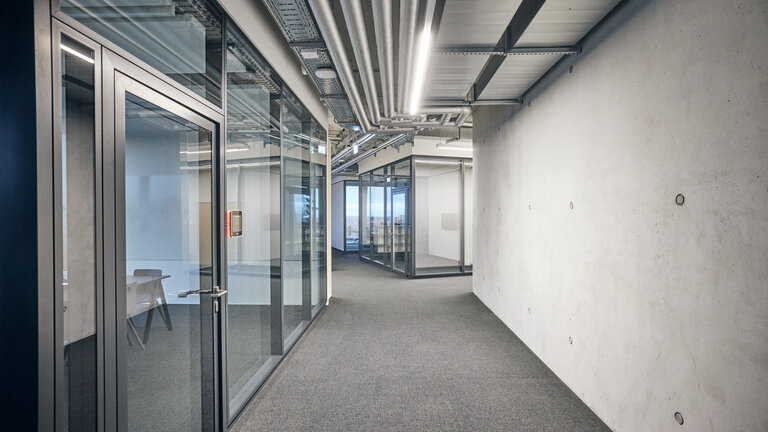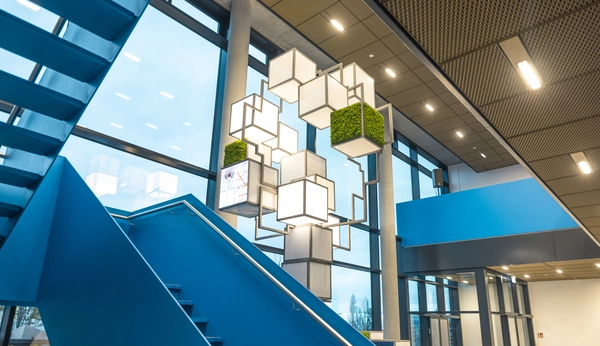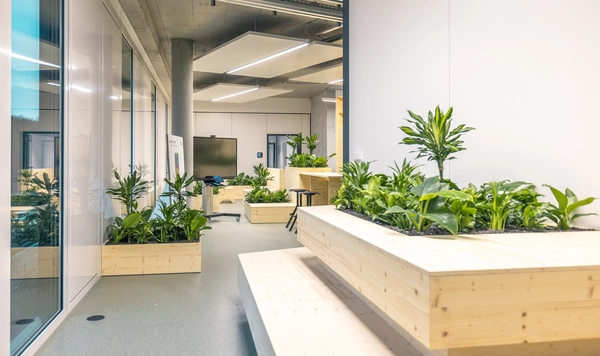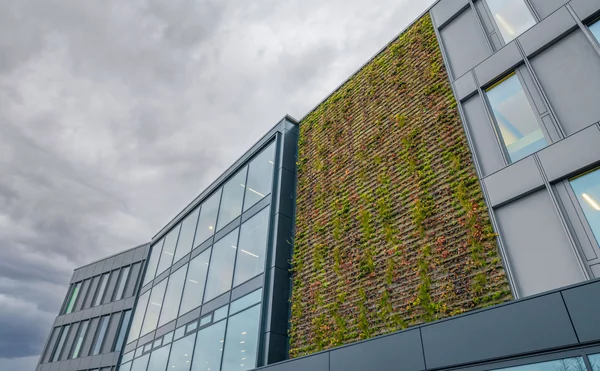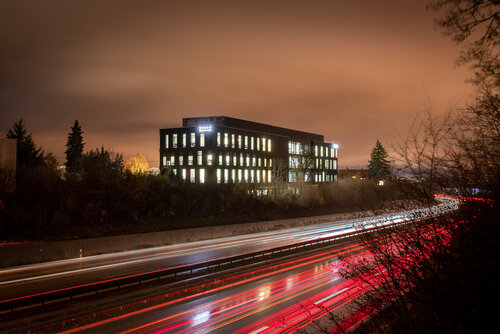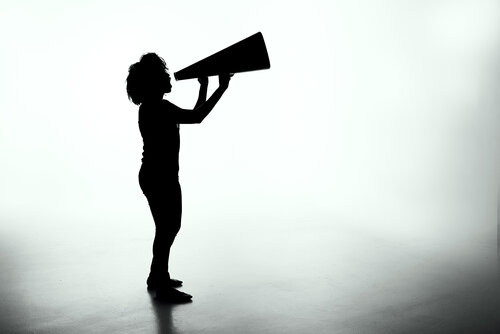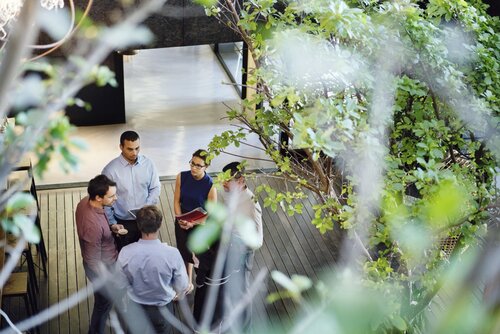Dit artikel van journalist Lucas Ligtenberg verscheen in het internationale magazine PropertyEU
Straight from the drawing board: a prefab office lab
What will the office look like post-Covid, and how can its environmental impact be minimised? Drees & Sommer explores the possibilities at its new Stuttgart HQ.
Obere Waldplätze, where the new headquarters of consulting, planning and project management company Drees & Sommer (D&S) is located, is an unremarkable street in the suburbs of Stuttgart. In fact, at first sight, the 7,500 m² building, dubbed OWP12 after its address, does not really stand out amidst the other, fairly low structures. All form part of a Drees & Sommer campus that is not quite a campus yet. The company owns nine separate buildings on the same street and the plan is to transform the whole site into a park, including a still-to-be-built underground parking garage. ‘To build your own building is more difficult than somebody else’s,’ says Drees & Sommer’s CEO Steffen Szeidl during a tour of the new complex. ‘I have about four thousand colleagues here who have ideas for even better buildings.’ Since D&S is in the business of designing and developing ‘better’ buildings, that should not come as a surprise. The company refers to its new office headquarters, which opened last December, as its business card, a showcase of what it has to offer potential clients. As such, it is both a lighthouse project and test facility. Says a proud Szeidl: ‘We are designing and developing the building, and we own it.’
Function over aesthetics
OWP12 measures 70 x 20 x 20 metres and is neither shiny nor glassy, like a lot of new buildings. It may not be beautiful, but it is very functional. The philosophy behind it, which Drees & Sommer applies to all its buildings, is that the real estate sector has a special responsibility towards the planet and in combatting climate change. ‘In terms of CO₂-emissions, buildings are responsible for 36% of them,’ Szeidl points out. ‘By comparison: cars account for only 11%.’ It was one of the reasons why, four years ago, Drees & Sommer set out to design its own new main office as a zero emissions building which would preferably give energy back to the grid. At the time, the building was scheduled to be finished by mid-2021, but there was some delay due to Covid. ‘We did well, considering the pandemic,’ says Szeidl. The costs of the project amounted to €22 mln and D&S was able to finance this on its own. It applied for a subsidy for just one small application in the parking garage, a ‘smart’ solution for organising the charging of electric vehicles. Comments Szeidl: ‘You won’t believe it, but that is now the last part of our headquarters still not finished.’
Video
Steffen Szeidl, CEO and a Member of the Executive Board at Drees & Sommer, gives a tour of the building, unpacking the elements and building process that resulted in this super sustainable, circular, net energy plus, modular and smart office building - a modern workplace ready for the future.
